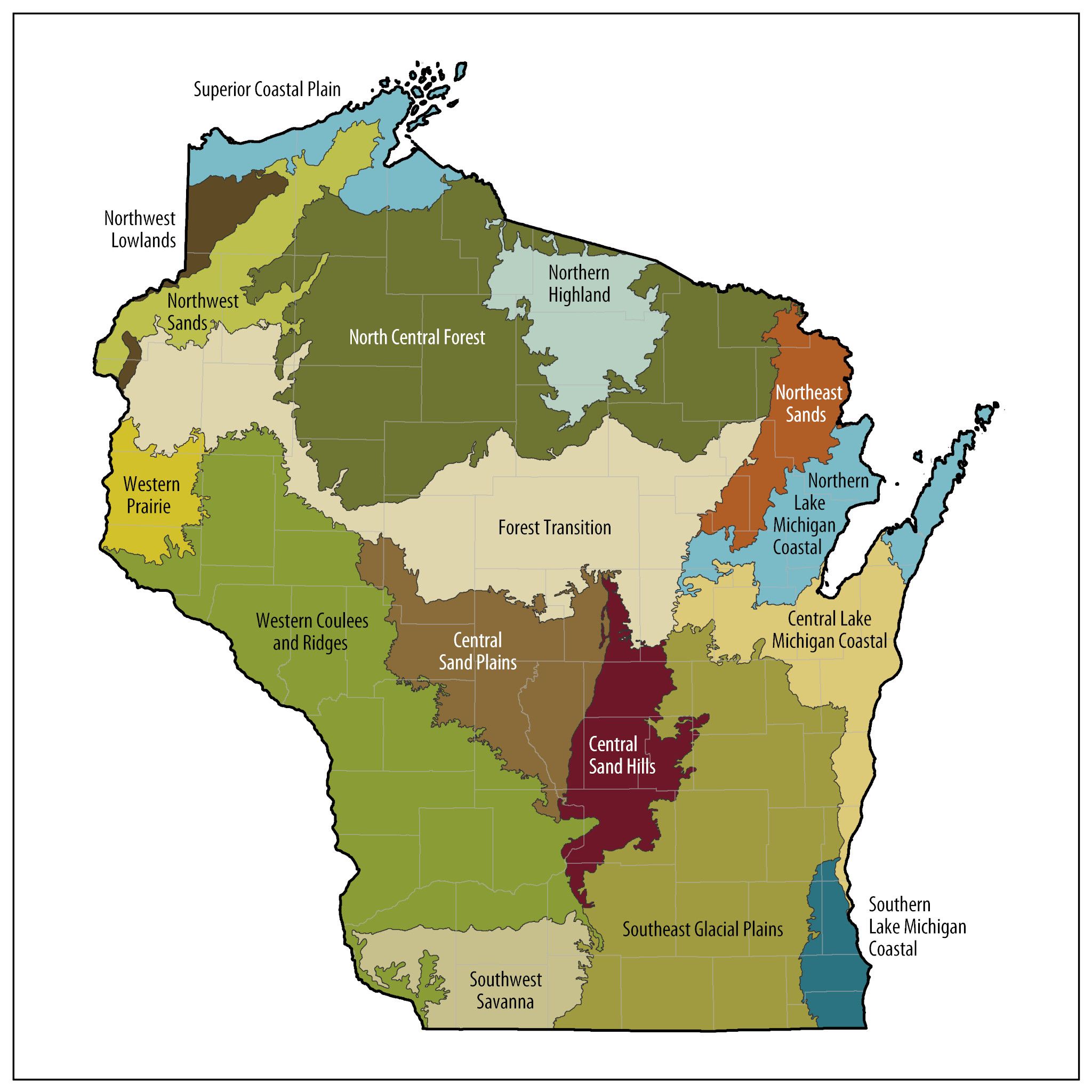Milwaukee: Guide to Plants, Animals and Organisms.
 Biodiversity is a shortened form of the term "biological diversity." The entire spectrum of life forms and the many ecological processes support them. Wisconsin is blessed with abundant biodiversity. Located at the junction of the eastern deciduous forest, northern boreal forest and temperate grasslands, we have a wealth of species and natural communities.
Milwaukee boasts a diverse array of ecosystems, contributing to its rich biodiversity. The city is situated along the shores of Lake Michigan, which provides vital habitats for various aquatic species. The lake itself is home to fish such as salmon, trout, and numerous native species.
On land, Milwaukee's parks and green spaces, including the Milwaukee County Parks system and the Milwaukee River Greenway, support a variety of plant and animal life. These areas host native flora, including oak savannas and wetlands, which in turn support wildlife like deer, foxes, and a variety of bird species, including migratory birds.
Urban areas also foster unique biodiversity, as many plants and animals adapt to city life. Green roofs, community gardens, and urban forests contribute to ecological diversity and help promote pollinator species like bees and butterflies.
Overall, Milwaukee's biodiversity is shaped by its unique geographic location, urban environment, and conservation efforts that aim to protect and enhance the natural habitats within the city.
Biodiversity is a shortened form of the term "biological diversity." The entire spectrum of life forms and the many ecological processes support them. Wisconsin is blessed with abundant biodiversity. Located at the junction of the eastern deciduous forest, northern boreal forest and temperate grasslands, we have a wealth of species and natural communities.
Milwaukee boasts a diverse array of ecosystems, contributing to its rich biodiversity. The city is situated along the shores of Lake Michigan, which provides vital habitats for various aquatic species. The lake itself is home to fish such as salmon, trout, and numerous native species.
On land, Milwaukee's parks and green spaces, including the Milwaukee County Parks system and the Milwaukee River Greenway, support a variety of plant and animal life. These areas host native flora, including oak savannas and wetlands, which in turn support wildlife like deer, foxes, and a variety of bird species, including migratory birds.
Urban areas also foster unique biodiversity, as many plants and animals adapt to city life. Green roofs, community gardens, and urban forests contribute to ecological diversity and help promote pollinator species like bees and butterflies.
Overall, Milwaukee's biodiversity is shaped by its unique geographic location, urban environment, and conservation efforts that aim to protect and enhance the natural habitats within the city.
 Biodiversity is a shortened form of the term "biological diversity." The entire spectrum of life forms and the many ecological processes support them. Wisconsin is blessed with abundant biodiversity. Located at the junction of the eastern deciduous forest, northern boreal forest and temperate grasslands, we have a wealth of species and natural communities.
Milwaukee boasts a diverse array of ecosystems, contributing to its rich biodiversity. The city is situated along the shores of Lake Michigan, which provides vital habitats for various aquatic species. The lake itself is home to fish such as salmon, trout, and numerous native species.
On land, Milwaukee's parks and green spaces, including the Milwaukee County Parks system and the Milwaukee River Greenway, support a variety of plant and animal life. These areas host native flora, including oak savannas and wetlands, which in turn support wildlife like deer, foxes, and a variety of bird species, including migratory birds.
Urban areas also foster unique biodiversity, as many plants and animals adapt to city life. Green roofs, community gardens, and urban forests contribute to ecological diversity and help promote pollinator species like bees and butterflies.
Overall, Milwaukee's biodiversity is shaped by its unique geographic location, urban environment, and conservation efforts that aim to protect and enhance the natural habitats within the city.
Biodiversity is a shortened form of the term "biological diversity." The entire spectrum of life forms and the many ecological processes support them. Wisconsin is blessed with abundant biodiversity. Located at the junction of the eastern deciduous forest, northern boreal forest and temperate grasslands, we have a wealth of species and natural communities.
Milwaukee boasts a diverse array of ecosystems, contributing to its rich biodiversity. The city is situated along the shores of Lake Michigan, which provides vital habitats for various aquatic species. The lake itself is home to fish such as salmon, trout, and numerous native species.
On land, Milwaukee's parks and green spaces, including the Milwaukee County Parks system and the Milwaukee River Greenway, support a variety of plant and animal life. These areas host native flora, including oak savannas and wetlands, which in turn support wildlife like deer, foxes, and a variety of bird species, including migratory birds.
Urban areas also foster unique biodiversity, as many plants and animals adapt to city life. Green roofs, community gardens, and urban forests contribute to ecological diversity and help promote pollinator species like bees and butterflies.
Overall, Milwaukee's biodiversity is shaped by its unique geographic location, urban environment, and conservation efforts that aim to protect and enhance the natural habitats within the city.